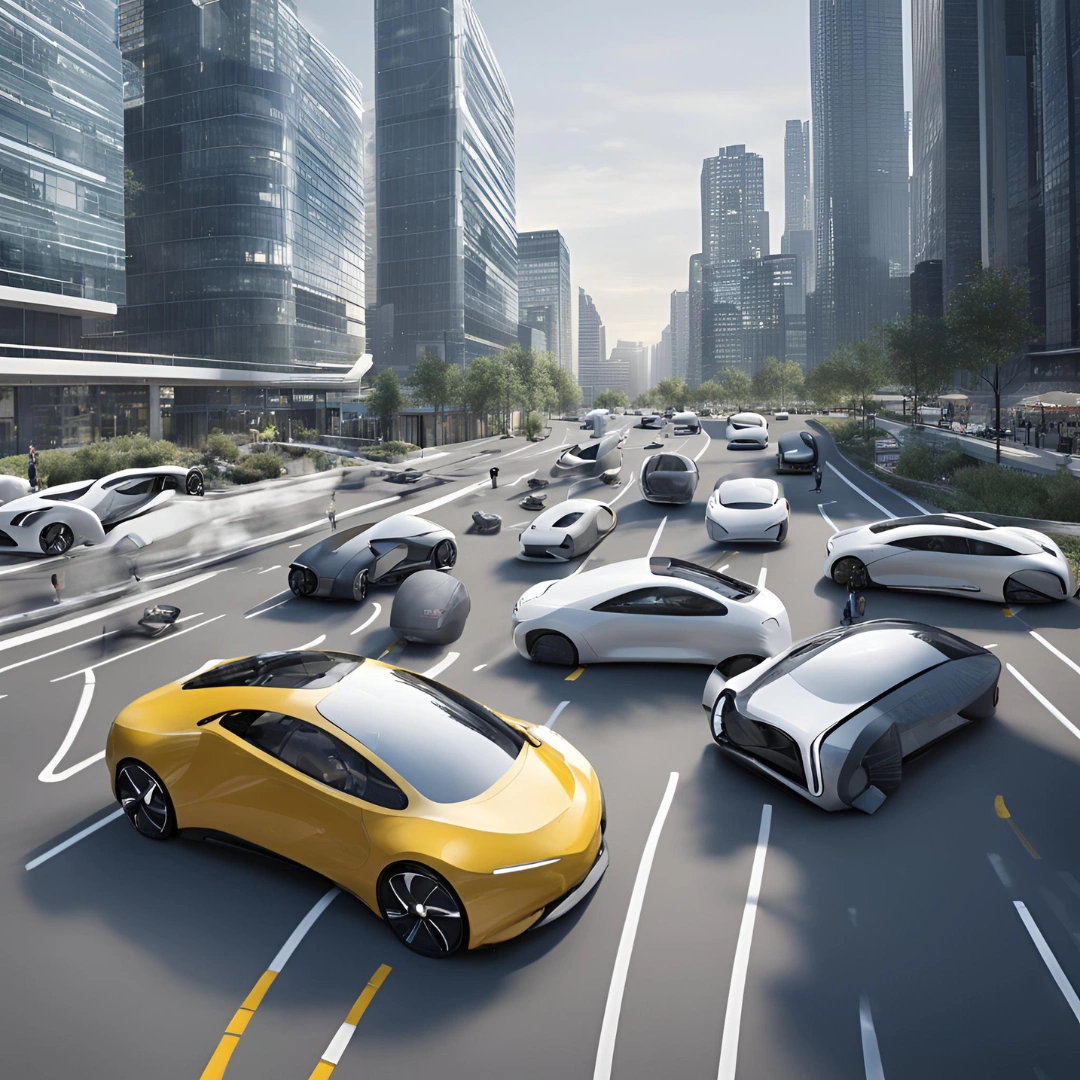An important turning point in human history has been reached with the emergence of autonomous systems: machines are now capable of functioning autonomously, making decisions and carrying out tasks without direct human interaction. Autonomous systems have wide-ranging uses, ranging from drones and self-driving cars to autonomous medical gadgets and robots in manufacturing plants. We go into the principles of autonomous systems, their applications in a variety of industries, the major technologies advancing their development, moral issues, and the landscape they portend in this extensive investigation.
Understanding Autonomous Systems
Frequently called intelligent or self-governing systems, autonomous systems are machines that are outfitted with sensors, actuators, and artificial intelligence (AI) algorithms. These components allow the machines to sense their surroundings, make choices, and carry out activities without the need for direct human supervision. These systems use cutting-edge technology like sensor fusion, computer vision, and machine learning to navigate challenging situations, adjust to changing circumstances, and complete jobs quickly.
Key Components:
-
Sensors: Numerous sensors, such as cameras, LiDAR, radar, ultrasonic sensors, and GPS, are built into autonomous systems. These sensors offer real-time information about the environment.
-
AI and Machine Learning: Intelligent algorithms facilitate real-time decision-making, experience-based learning, and sensor data interpretation for autonomous systems. By exposing these systems to fresh data over time, machine learning approaches enable them to perform better.
-
Actuators: The devices that convert the AI's judgments into actual physical actions are called actuators. These include the hydraulic, pneumatic, motor, and servo systems that enable autonomous systems to communicate with their surroundings and carry out activities on their own.
Applications of Autonomous Systems
-
Transportation:
-
Self-Driving Vehicles: With their ability to increase mobility for those with impairments or limited access to transportation, reduce traffic, and improve safety, autonomous cars, trucks, and drones have the potential to completely transform the transportation industry.
-
Public Transit: The potential for effective and dependable public transportation options is presented by autonomous buses and shuttles, particularly in urban regions where traffic is a major issue.
-
-
Manufacturing and Logistics:
-
Robotic Automation: In manufacturing facilities, autonomous robots are being employed more and more for material handling, welding, assembling, and painting jobs. These robots increase productivity, quality, and worker security.
-
Warehouse Automation: Drones and automated guided vehicles (AGVs) are examples of autonomous technologies that enhance warehouse operations through the autonomous movement of items, order picking and packing, and inventory management.
-
-
Healthcare:
-
Surgical Robots: By assisting surgeons in carrying out minimally invasive treatments with accuracy and precision, autonomous surgical systems lower surgical errors and enhance patient outcomes.
-
Medical Imaging: AI-powered imaging systems can automatically interpret MRIs, CT scans, and X-rays, helping in early disease diagnosis and detection.
-
-
Agriculture:
-
Precision Farming: Precision agriculture uses autonomous drones and robots with sensors and artificial intelligence (AI) to monitor crops, administer pesticides and fertilizers, and manage irrigation, resulting in higher yields and less environmental impact.
-
Robotic Harvesting: In order to gather fruits, vegetables, and other commodities more efficiently and at a lower labor cost, agriculture uses autonomous harvesting devices.
-
-
Space Exploration:
-
Planetary Rovers:Robotic rovers, like to NASA's Mars rovers, are deployed to distant planets to investigate their surfaces, gather data, and carry out scientific investigations. Because of the communication lag between Earth and the far-off planets, these rovers are self-sufficient.
-
Satellite Maintenance: By performing repairs and maintenance on satellites while they are in orbit, autonomous spacecraft help to prolong their operational life and lessen the need for expensive and dangerous manned flights.
-
Key Technologies Driving Autonomous Systems
-
Artificial Intelligence (AI): Without human assistance, autonomous systems can sense their surroundings, process information, and come to choices thanks to AI algorithms. Specifically, deep learning algorithms have demonstrated impressive performance in a range of autonomous applications.
-
Machine Learning: Algorithms for machine learning enable self-governing systems to enhance their efficiency gradually by gaining knowledge and encountering fresh information. Common machine learning techniques used in autonomous systems include reinforcement learning, supervised learning, and unsupervised learning.
-
Computer Vision: Computer vision technologies facilitate activities like object detection, recognition, tracking, and navigation by enabling autonomous systems to interpret visual data from cameras and sensors.
-
Sensor Fusion: Sensor fusion methods combine information from several sensors to give a complete picture of the surroundings. Autonomous systems can gain a more reliable and precise sense of their environment by integrating data from cameras, LiDAR, radar, and other sensors.
-
Localization and Mapping (SLAM): Autonomous systems may produce maps of their surroundings and instantly ascertain their own location within them thanks to simultaneous localization and mapping algorithms. For path planning and navigation in uncharted or dynamic areas, SLAM is crucial.
-
Navigation and Path Planning: Navigation algorithms determine the best routes for autonomous systems to take in order to accomplish their objectives while avoiding hazards and abiding by safety regulations. These algorithms consider variables like mission objectives, vehicle dynamics, and the surrounding environment.
Ethical Considerations and Challenges
The proliferation of autonomous systems raises ethical considerations and challenges that must be addressed to ensure their responsible development and deployment:
-
Safety: It is crucial to guarantee the safety of autonomous systems, particularly in vital applications like healthcare and transportation. Sturdy testing, validation, and fail-safe procedures are necessary to reduce risks and avoid mishaps.
-
Privacy and Security: Large volumes of data are gathered and processed by autonomous systems, which raises questions about security, privacy, and possible abuse. Preserving confidential data and guaranteeing data security are essential for upholding public confidence.
-
Job Displacement: Autonomous systems-driven automation could result in job displacement in some industries, creating difficulties for individuals and communities impacted by technological upheaval. Initiatives for reskilling and upskilling are required to get the workforce ready for occupations of the future.
-
Regulatory Frameworks: Creating thorough regulatory frameworks is necessary to control the implementation and functioning of autonomous systems and guarantee adherence to legal, ethical, and safety regulations.
-
Bias and Fairness: Autonomous systems that rely on AI algorithms may provide biased results that are unjust or discriminating. To ensure that everyone is treated fairly and has equal opportunity, it is imperative that bias be addressed and fairness be promoted in AI systems.
-
Autonomy and Accountability: To ensure accountability in the event of mishaps or malfunctions, it is imperative to make explicit the extent of autonomy and accountability of autonomous systems. To address the moral and legal concerns raised by autonomous systems, it is imperative to clearly define who is responsible for what.
Conclusion
The advent of autonomous systems signifies a fundamental change in how humans engage with technology and our surroundings. Autonomous systems have the ability to revolutionize transportation and industry, improve healthcare and agriculture, and create new avenues for innovation and advancement. They can also address some of society's most pressing problems.





Leave a Reply